The Inaugural Scientific Meeting of Near Infrared Photoimmunotherapy Held
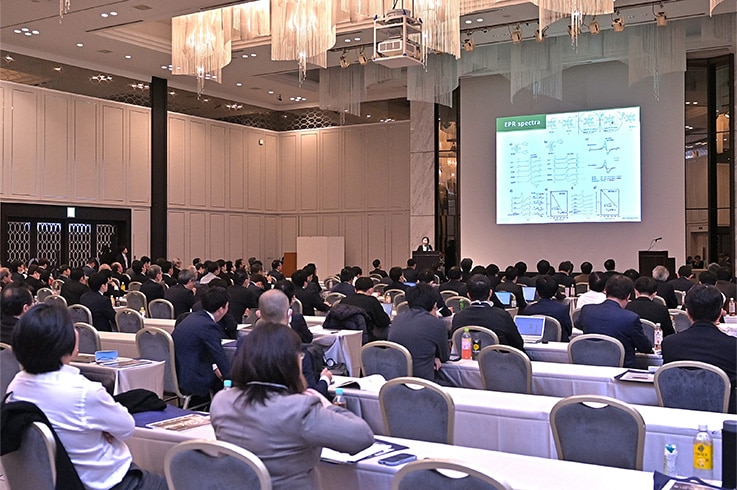
Session I - Lecture on Chemistry by Professor Mikako Ogawa, Laboratory for Bioanalysis and Molecular Imaging, Graduate School of Pharmaceutical Sciences, Hokkaido University
In December 2024, the Inaugural Scientific Meeting of Near Infrared Photoimmunotherapy was held in Tokyo. Photoimmunotherapy is anticipated as a new option available for treating cancer. Consequently, research is being conducted in an effort to use the method for as many patients as possible.
The symposium featured 20 physicians and researchers from 14 institutions who gave presentations on the latest research results and knowledge obtained from clinical use. Together with the 175 participants, they actively exchanged views to better understand the current status of photoimmunotherapy and its outlook for the future.

Dr. Hisataka Kobayashi, Senior Investigator, Molecular Imaging Branch, U.S. National Institutes of Health (NIH)
Overview of Photoimmunotherapy
Photoimmunotherapy is anticipated as a fifth choice for treating cancer, other than surgery, radiation therapy, chemotherapy, and immunotherapy.
The therapy method was developed by Dr. Hisataka Kobayashi, Senior Investigator at the Molecular Imaging Branch of the U.S. National Institutes of Health (NIH) and the Director of the Near InfraRed Photo-Immuno Therapy Research Institute at Kansai Medical University. It is based on a new treatment approach that involves injecting a conjugate drug that combines a photoreactive pigment with an antibody that uniquely targets cancer cells. Then the body area affected by cancer is irradiated with harmless near-infrared light in order to destroy only the cancer cells. That approach offers the major advantages of causing minimal damage to normal cells around the cancer and stimulating the immune response to cancer by destroying cancer cells. Currently, the treatment method is available at 180 facilities in Japan.
For now, the method is limited to treating certain types of cancer, but as research progresses in the future, the scope of applicability is expected to expand to include other body areas and types of cancer.
First Symposium on Near Infrared Photoimmunotherapy
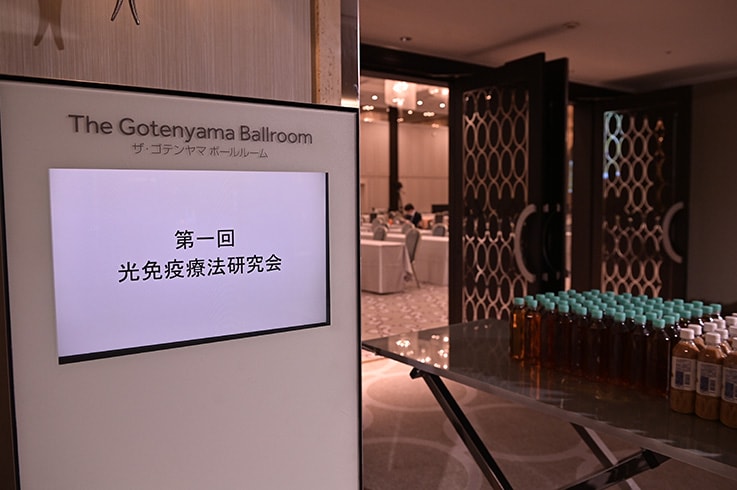
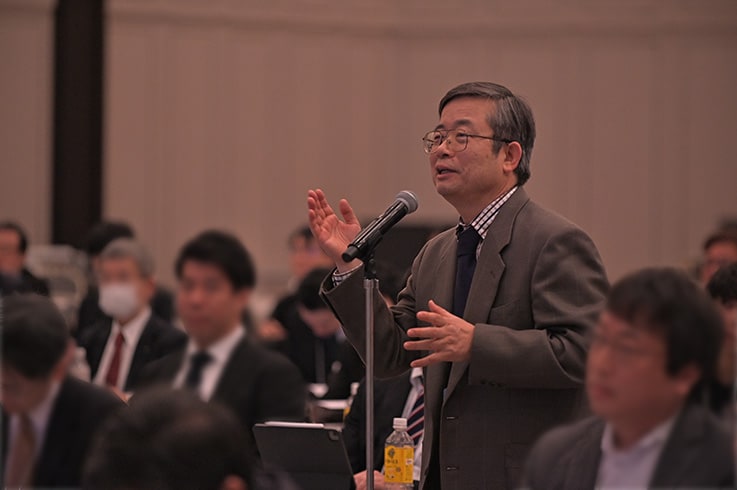
Dr. Hisataka Kobayashi promoting free discussion and an exchange of views
The purpose of the symposium is to promote a better overall understanding of photoimmunotherapy and an exchange of views about current research by all physicians, researchers, and other participants at the symposium involved in research. That resulted in a purely academic meeting with free and uninhibited discussions.
The symposium included five sessions for chemistry, preclinical research, clinical results/treatment planning, drug discovery, and device development, with presentations on a wide variety of fields related to photoimmunotherapy followed by discussion time for exchanging views after the sessions.
During the device development session, research results from using a Shimadzu LuminousQuester NI near-infrared light imaging system to visualize drug reactions during photoimmunotherapy were presented by the National Cancer Center Hospital East and the Hiroshima University Hospital.
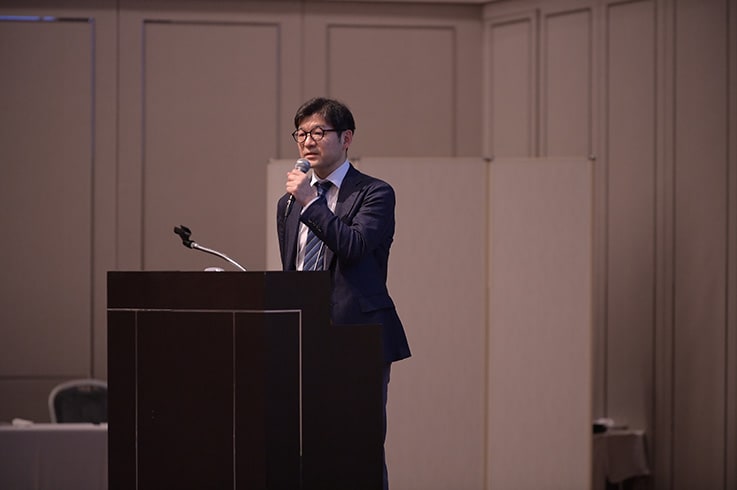
Session V - Lecture on Device Development by Associate Professor Tsutomu Ueda, Department of Otorhinolaryngology, Head and Neck Surgery, Hiroshima University Graduate School of Biomedical and Health Sciences
Shimadzu Involvement in Photoimmunotherapy
In 2004, soon after Dr. Kobayashi started working at the NIH in the United States, Shimadzu Scientific Instruments, Inc. (SSI) President Shigehiko Hattori (then President of SSI, Shimadzu’s Group subsidiary in the U.S. who is currently a Shimadzu Senior Corporate Advisor) provided Shimadzu analytical and measuring instruments to support Dr. Kobayashi’s research. That resulted in building a cooperative relationship, such as by dispatching engineers and jointly researching analytical and measuring instruments and fluorescence imaging technology.
LuminousQuester NI Imaging System Captures Light Collected at Cancers in Real Time
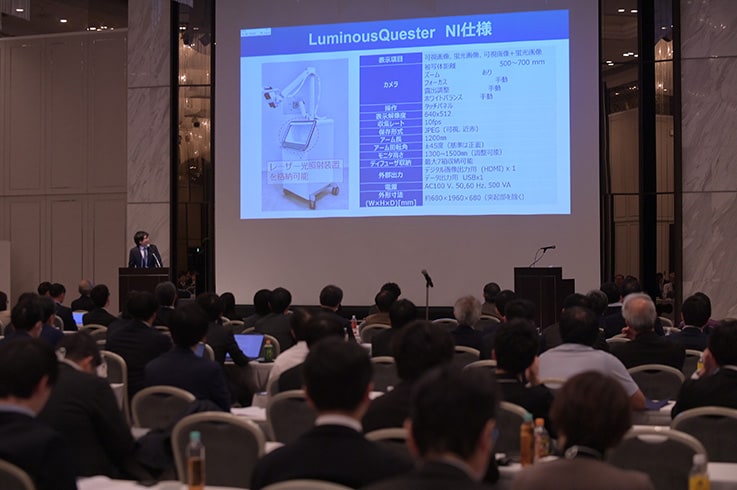
Session V - Lecture on Device Development by Dr. Hideki Tanaka, Department of Head and Neck Medical Oncology, National Cancer Center Hospital East, and Department of Otorhinolaryngology, Head and Neck Surgery, Tokyo Medical University
LuminousQuester NI is currently offered for non-clinical research applications. By obtaining approval from Ethics Committee of each institute, it is now being utilized in clinical research in the U.S. National Cancer Institute (NCI), the National Cancer Center Hospital East, and Hiroshima University.
For photoimmunotherapy, a current challenge for users in clinical healthcare and for developing new drugs is confirming the status of drug accumulation in cancers, the progress level of treatment, and the treatment status so that therapeutic efficacy can be increased. Shimadzu released the LuminousQuester NI imaging system to solve such challenges and is also simultaneously developing a system for clinical use.
Open Innovation Leads to New Business Development
Shimadzu established the Startup Incubation Center within the company and collaborated with research institutions that have different technologies or specialized knowledge than Shimadzu to commercialize the LuminousQuester NI imaging system for use in researching or developing new drugs.
The Startup Incubation Center was established to serve as a bridge for product development and business deployment. Thus far, it has been involved in developing or deploying a integrated management type urine volume measurement system (Urina), an underwater optical wireless modem (MC500), and a health improvement platform (SUPOFULL).
Based on Shimadzu’s management principle "Realizing Our Wishes for the Well-being of Mankind and the Earth," Shimadzu intends to help achieve the advancement and broad adoption of photoimmunotherapy methods by using Shimadzu’s fluorescence imaging technologies and analytical/measuring technologies to optimize treatment methods for each patient. We will also provide support to physicians and researchers through our product development activities.
Comment from person in charge at Shimadzu
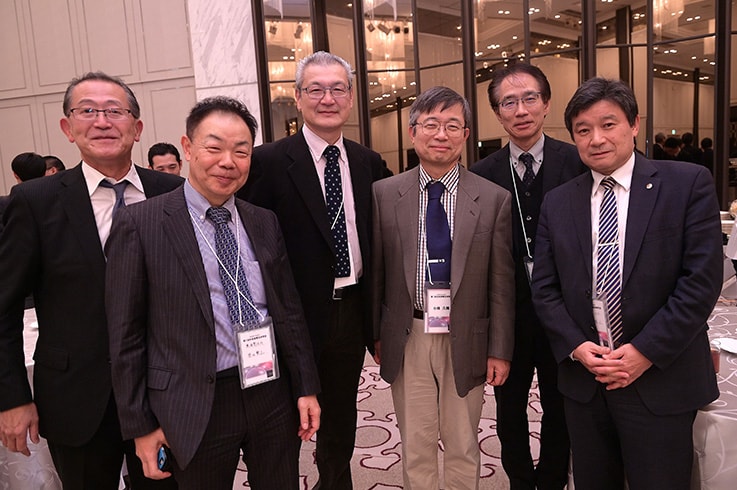
Dr. Kobayashi (right of center) with the person in charge at Shimadzu (second from left)
The mechanism involved in photoimmunotherapy offers a broad variety of potential applications in the future. In addition to using it to treat other types of cancer than cancers of the head and neck, it also might be possible to use photoimmunotherapy to prevent recurrence by destroying cells that inhibit immunity at the same time as cancer treatment in order to strengthen immunity and even treat metastatic cancers. Therefore, research is being conducted on treating illnesses and killing non-cancer pathogens based on the belief that additional research could offer a major contribution to humankind.
We will continue pursuing this business because additional research by researchers, clinical physicians, and Shimadzu will not only offer new opportunities for previously difficult treatment methods but also may allow patients to regain the lifestyle best suited to them.
 Page Title and URL Copied.
Page Title and URL Copied.


